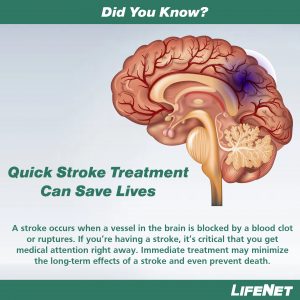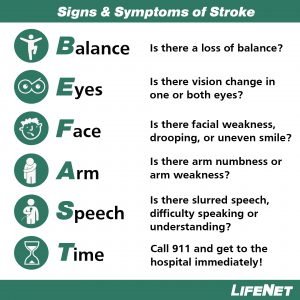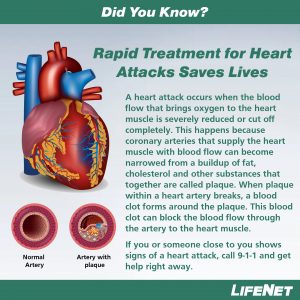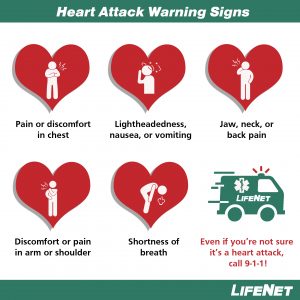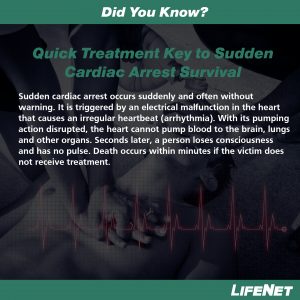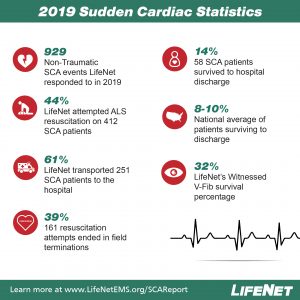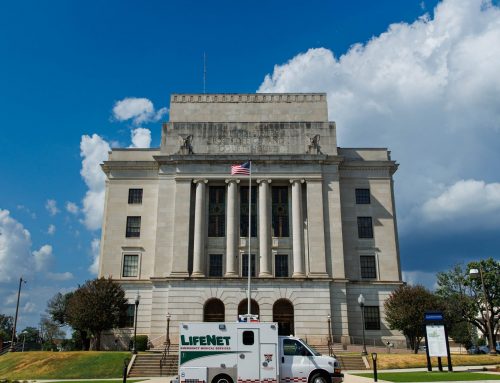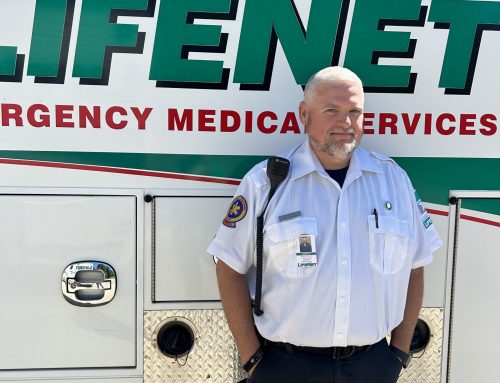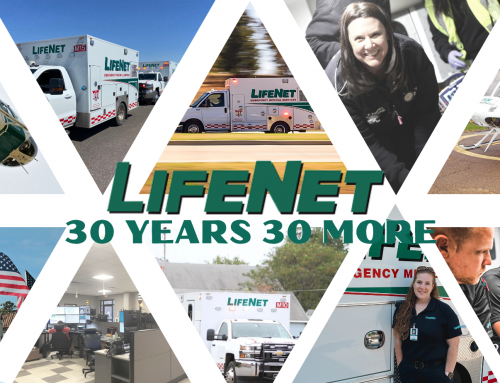According to a recent press release by the American Heart Association (AHA), there has been a decline nationally in the number of patients having heart attacks and strokes. The trend is also being seen locally, and the possible reason behind it could mean the difference in life and death to victims of these illnesses.
Since mid-March, LifeNet has seen a 36 percent decrease in the number of people calling an ambulance for heart related problems and a 16 percent decrease in the number of people calling an ambulance for a stroke across their service areas.
“The number of heart attacks and strokes are not necessarily declining. While ongoing research may uncover other underlying reasons for decreasing numbers of heart attack and stroke patients in hospitals, the prevailing theory is that people just aren’t calling 911,” reads the AHA’s press release.
The public should know that minutes matter when someone is suffering a heart attack, sudden cardiac arrest, or stroke. Anyone suffering symptoms related to these illnesses should call 9-1-1 immediately.
“It is safe to call 9-1-1 for emergencies. Our EMTs and paramedics are trained to respond to all types of emergencies, not just COVID-19 related calls,” said David Baumgardner, CEO for LifeNet. “Additionally, we have processes in place to ensure ambulances and equipment are sanitized after every call. Our crews are wearing the appropriate PPE to prevent the spread of COVID-19 while still ensuring patients get the care they need during emergencies.”
LifeNet has also seen a 24 percent decrease in calls systemwide for people suffering falls. While this number may not seem significant, falls are often caused by people unaware they are suffering symptoms of stroke, heart attack, or even the first stages of possible sudden cardiac arrest.
About Strokes
The brain is made up of nervous tissue. That tissue is rapidly and irretrievably lost as a stroke progresses, which is why it is important to “be fast” in recognizing the symptoms of stroke, calling 9-1-1, and getting treatment immediately.
According to a paper published in the AHA Journal, “Every minute in which a large vessel ischemic stroke is untreated, the average patient loses 1.9 million neurons, 13.8 billion synapses, and 12 km (7 miles) of axonal fibers. Each hour in which treatment fails to occur, the brain loses as many neurons as it does in almost 3.6 years of normal aging.”
The easiest way to recognize the symptoms of stroke are to remember the acronym BE FAST.
- BALANCE
Is there a loss of balance? - EYES
Is there a vision change in one or both eyes? - FACE
Is there facial weakness, drooping or an uneven smile? - ARM
Is there arm numbness or arm weakness - SPEECH
Is there slurred speech, difficulty speaking or understanding? - TIME
If any of these symptoms are present, call 9–1–1 and get to the hospital immediately.
About Heart Attacks
Surviving a heart attack depends on how much the heart muscle dies. This is largely determined by how much time passes before a blocked artery can be re-opened. If treatment is delivered within three or four hours, much of the permanent muscle damage can be avoided. After about 12 hours, the damage is usually irreversible.
Someone suffering a heart attack may experience discomfort in the center of the chest that lasts more than a few minutes. Sometimes that pain goes away and then returns. It usually presents as uncomfortable pressure, squeezing, fullness, or pain.
Other symptoms of a heart attack include pain or discomfort in one or both arms, the back, neck, jaw or stomach. Patients may also have shortness of breath. Other possible signs include nausea, lightheadedness, or breaking out in a cold sweat. All symptoms can occur with or without chest discomfort.
About Sudden Cardiac Arrest
Sudden cardiac arrest occurs suddenly and often without warning. It is triggered by an electrical malfunction in the heart that causes an irregular heartbeat. When this happens, the heart cannot pump blood to the brain, lungs and other organs. Seconds later, a person loses consciousness and has no pulse. Death occurs within minutes if the victim does not receive treatment.
Treatment consists of calling 9-1-1 immediately to get an ambulance en route, applying an AED if it is available, and starting bystander CPR. LifeNet’s dispatchers will coach you over the phone in how to perform chest compressions and use the AED until medical crews arrive on scene.
“The public has heard a lot recently about staying home and avoiding calling an ambulance or going to the hospital if it is not a medical emergency. While this is good advice, it is never good to ignore an emergency. When in doubt, call 9-1-1. Let our paramedics come and evaluate you and take you to the hospital if you need to go,” said Baumgardner. “Don’t let the fear of getting COVID-19 keep you from saving your own life, or the life of someone you love. Call an ambulance if you need it.”


